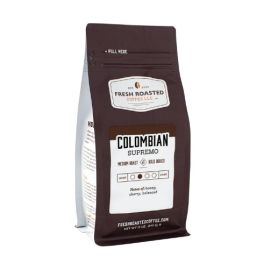
When it comes to comparing Turkish coffee and espresso, it’s like comparing two distinct characters with their unique strengths. Espresso is known for its concentrated form, achieved through forcing pressurized steam through finely ground coffee, making it bold and intense with a higher caffeine concentration per ounce. On the other hand, Turkish coffee takes a more gentle approach, where water and finely ground coffee are boiled together in a pot called a cezve, leading to a beverage that is rich, full-bodied, and textured due to the coffee grounds left in the cup.
Caffeine-wise, espresso packs more punch per ounce, but Turkish coffee servings are generally larger, evening out the caffeine content over a full cup. Flavor intensity is another domain where they differ; espresso delivers a quick, robust flavor, while Turkish coffee offers a lingering, complex taste that evolves as you sip. The choice between them boils down to personal preference and the experience you’re seeking.
Key Takeaways
- Taste and Preparation: Espresso and Turkish coffee offer unique experiences, both in how they’re made and how they taste. Espresso gives you that quick, intense burst of flavor, while Turkish coffee is all about savoring the moment.
- Caffeine Content: While espresso might seem stronger due to its brewing method, when comparing full servings, the caffeine content levels out, making both a worthy pick-me-up.
- Personal Preference: Ultimately, it’s your call. Some might lean towards the creamy texture and rapid satisfaction of an espresso, while others will cherish the slow, ritualistic enjoyment of Turkish coffee.
- Cultural Richness: Both drinks come with deep cultural roots, adding a layer of tradition and storytelling to every cup.
Espresso Brewing Technique
Espresso is an art and a science, requiring precise pressure, temperature, and timing to extract a small, potent shot of coffee. Specialized machines are the conductors of this symphony, channeling pressurized hot water through tightly packed, finely ground coffee. This process yields a shot with a creamy layer on top, known as crema, capturing the essence of the coffee in a small, powerful package. It’s quick, it’s intense, and it’s a base for many beloved coffee drinks.
Turkish Coffee Brewing Method
The Turkish coffee method is steeped in tradition, creating a coffee experience that’s as much about the preparation as it is about the drinking. The process starts with ultra-fine coffee grounds, finer than what’s used for espresso, mixed with water (and often sugar) in a cezve.
This mixture is then slowly brought to a boil, allowing foam to form, which is carefully poured into a cup to capture the essence of the coffee. The result is a thick, aromatic brew that’s savored slowly, often concluding with a sediment-filled finale that’s left in the cup.
Coffee Beans and Roast Types
When diving into the worlds of Turkish coffee and espresso, the choices of beans and their roasts play pivotal roles in defining each cup’s character. Arabica and Robusta beans are the main actors on this stage, each bringing their distinct flavors and caffeine levels.
Turkish coffee often leans towards Arabica beans, prized for their smoother, more aromatic profiles. These beans are typically lighter in roast, allowing the subtle flavors and sweetness to shine, complementing the traditional preparation method that includes sugar and sometimes spices.
Espresso, on the other hand, doesn’t play favorites with bean type; it’s all about the blend. A mix of Arabica for depth and Robusta for body and crema is common, with darker roasts prevailing. The intense heat and pressure of espresso extraction call for beans that can withstand the process, delivering a rich, concentrated shot with layers of flavor and a beautiful crema on top.
Grinding Process
The grind is where the rubber meets the road, or rather, where the bean meets the brewer. The size of the coffee grounds is crucial and varies significantly between Turkish coffee and espresso, affecting both the brewing process and the final flavor.
Turkish coffee demands the finest grind, akin to powdered sugar, because the coffee grounds are meant to be fully submerged and boiled in water, not just steeped. This ultra-fine grind ensures maximum surface area contact with the water, extracting every bit of flavor and giving Turkish coffee its signature full-bodied, almost chewy texture.
Espresso requires a fine grind, but not as powdery as for Turkish coffee—think more along the lines of table salt. This consistency is critical for creating the necessary resistance to the pressurized water in an espresso machine, allowing for optimal extraction of oils and flavors. It’s this precise grind that contributes to the espresso’s hallmark intensity and the rich, velvety crema that adorns its surface.
Taste Profile and Flavor
Diving into the flavor profiles of Turkish coffee and espresso, each brew offers a distinct experience that can be tailored to personal tastes through brewing time, serving styles, and optional additions.
Turkish coffee is known for its rich, intense flavor that can be described as bold yet smooth. It often carries a hint of sweetness if sugar is added during the brewing process, alongside potential aromatic depth from spices like cardamom. The slow boiling method allows for a thorough extraction of flavors, resulting in a layered coffee that starts with a frothy top, moves through a body of deep, complex flavors, and ends with the textured residue of fine grounds.
Espresso, in contrast, is characterized by a concentrated shot that delivers a potent taste in a small package. It often features a balance of bitterness and acidity, with a creamy body known as crema on top. The high-pressure brewing extracts rich flavors and aromas from the beans, creating a profile that can range from floral and fruity to chocolatey and nutty, depending on the beans used.
Caffeine Content and Health Considerations
When it comes to caffeine content, both Turkish coffee and espresso pack a punch, but in slightly different ways. Espresso typically has more caffeine per ounce, attributed to the pressurized brewing method that efficiently extracts caffeine. However, Turkish coffee, served in larger quantities, can contain a comparable total caffeine amount due to its full immersion brew method and the fine grind of the beans allowing for extensive caffeine extraction.
Health-wise, consuming moderate amounts of coffee, regardless of the type, has been linked to various benefits like enhanced alertness and potential long-term protective effects against chronic diseases. Yet, specific concerns arise with Turkish coffee due to its unfiltered nature. Unfiltered coffee retains compounds like cafestol and kahweol, which can elevate cholesterol levels in some individuals.
Meanwhile, the concentrated nature of espresso means it’s easy to overconsume caffeine, potentially leading to restlessness, anxiety, or disrupted sleep patterns for sensitive individuals.
Ritual and Tradition
Turkish coffee isn’t just a drink; it’s a cultural artifact, steeped in tradition and communal ties. In Turkey and surrounding regions, preparing and enjoying Turkish coffee is a social ritual, often accompanied by fortune telling from the coffee grounds left in the cup. It’s a symbol of hospitality and friendship, served with water to cleanse the palate and sometimes a sweet treat on the side.
Espresso, originating from Italy, carries its own set of traditions, embodying the Italian knack for innovation and a love for life’s pleasures. Espresso bars are social hubs where quick, standing consumption reflects the fast-paced lifestyle, yet no compromise is made on the quality and enjoyment of the coffee. It’s more than just a caffeine fix; it’s a cherished part of daily life and social interaction.
Regional Variations and Personal Preferences
From the streets of Istanbul to the cafes of Rome, regional preferences and variations abound. In Turkey, you might find Turkish coffee prepared with a hint of cardamom or served very sweet, according to local tastes. Espresso, too, shows regional flair; for instance, the addition of a lemon peel in an Espresso Romano reflects the Italian love for incorporating local ingredients into their culinary traditions.
These variations aren’t just geographical but personal. The way one prefers their Turkish coffee or espresso can speak volumes about their taste and sometimes even their personality, making each cup a very personal experience.
FAQs
Where do Turkish coffee and espresso originate from? Turkish coffee has its roots in the Ottoman Empire, while espresso hails from Italy.
How do their caffeine contents compare? Espresso has a higher caffeine concentration per ounce, but Turkish coffee servings are generally larger.
Any tips for brewing? For Turkish coffee, use very fine grounds and simmer slowly; for espresso, ensure the grounds are finely but not overly ground and use high pressure.
Final Thoughts
In the world of coffee, Turkish coffee and espresso stand out for their unique preparation methods, rich flavors, and deep cultural roots. Whether you’re drawn to the velvety intensity of an espresso or the slow, nuanced experience of Turkish coffee, it’s clear that both beverages offer more than just a caffeine kick. They’re a window into the cultures that created them, a testament to the diverse ways we enjoy coffee around the globe.









